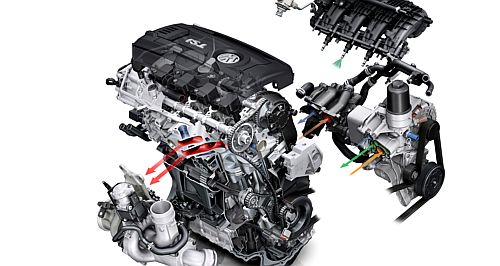Make / Model Search
News - VolkswagenVW and Xpeng boost tech relationshipGerman giant VW expands collaboration with Chinese car-maker Xpeng to cut tech costs22 Aug 2025 CHINA’S volatile auto-making sector and a new-vehicle market in hyper-drive is throwing up interesting bedfellows in a scramble to cut costs and cater for electrified vehicles, internal combustion engines (ICE) and everything in between.
This was exemplified last week in a move by Volkswagen to utilise a new electronic architecture to lower its cost base in China via an expanded technology relationship with electric vehicle specialist Xpeng.
Under the agreement, the German manufacturer will adopt Xpeng’s electronic architecture for the Volkswagen brand’s future ICE cars developed for China – despite sales of ICE vehicles rapidly declining in the country in the face of robust battery electric vehicle (BEV) uptake.
Most of Volkswagen’s annual sales in China, amounting to 1.3 million units, are currently ICE-powered.
The VW/Xpeng news emerged just days after Dongfeng Motor started extricating itself from an ICE joint venture with Honda, attributed to sharply declining sales of ICE vehicles in the country and fierce domestic competition that more than halved Dongfeng Motor sales over eight years.
VW says the ICE Sagitar and Passat models are its best sellers in China and future ICE models from VW will use electronic architecture developed with Xpeng.
According to Automotive News, VW has leaned on Xpeng for a wide range of electric-focused technology since buying a five per cent stake in the Tesla rival in 2023.
“This is the first time, however, that VW will integrate Xpeng’s tech in its core combustion-engine range, which accounts for a majority of the group’s sales in China,” says Automotive News.
“Having an advanced, easily updatable electronic architecture is seen as essential for the software-defined cars that tech-savvy Chinese customers increasingly demand.
“VW announced last year that it would switch to the China Electronic Architecture developed by Xpeng along with the Volkswagen Group China Technology Company (VCTC) and its software arm, Cariad, for all VW brand electric cars developed in China, with the first due in 2026.
The architecture is based around three powerful “zonal” computers that each control a group of electronic functions. VW said this switch away from individual controllers would reduce the number of control units by 30 per cent and reduce costs and system complexity.
VW said it enables faster software improvements and over-the-air updates, as well as significantly shortening vehicle development times.
VW’s new agreement with Xpeng allows it to roll out the architecture to future VW brand models developed in China for sale in the country.
Last month, Charles Zhang, head of Xpeng’s corporate finance and investments, said of the expanded collaboration: “I believe that Volkswagen is probably the only global auto company … that has one E/E (electronic/electric) architecture platform across all powertrains.”
VW Group China CEO Ralf Brandstätter said in a statement that by adopting the China Electronic Architecture to the combustion-engine fleet, the company was “strengthening our technological leadership in the conventional powertrain sector”.
Automotive News says next year, VW brand will launch the first vehicle built on the CMP (China/Compact Main Platform) architecture derived from Xpeng’s Edward platform used by the company’s G9 electric SUV.
The first car was previewed at the Shanghai auto show by the ID. Aura, which also incorporated the China Electronic Architecture but no on-sale date has been given.  Read more |
Click to shareVolkswagen articlesResearch Volkswagen Motor industry news |












Facebook Twitter Instagram